We've done scalloped fretboards for customers in the past, but it was always upon special request.
But now there are two new options for scalloped fretboards under the Special Options category of the Halo Guitar Customization Tool (guitar configurator).
The two options are:
Full Scalloped Fretboard - the entire fretboard is scalloped (from fret #1 all the way through the end of the fretboard).
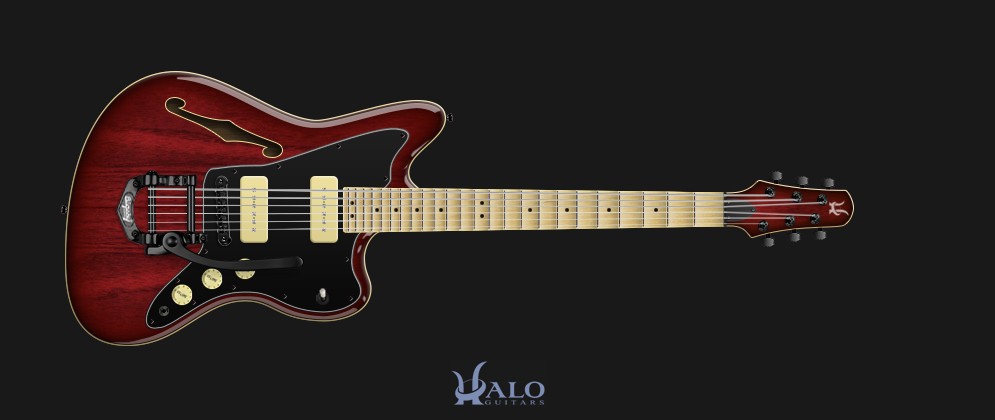
Half Scalloped Fretboard - the upper register is scalloped (from fret #12 all the way through the end of the fretboard).
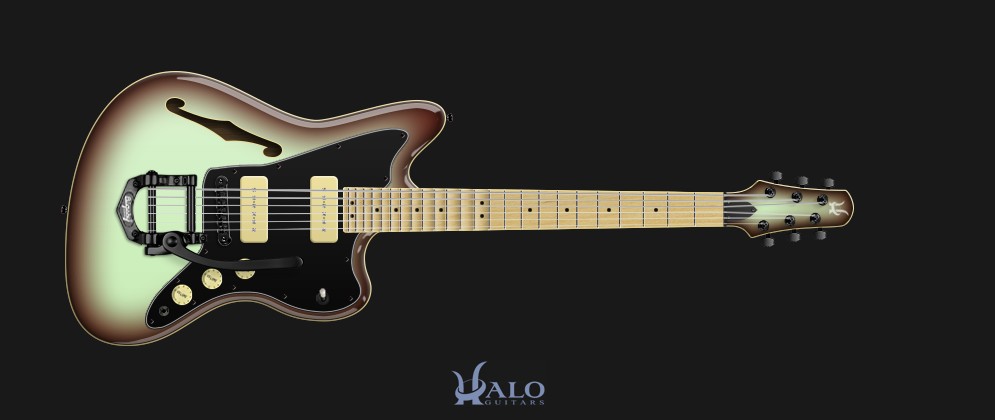
If you're in the market for a scalloped fretboard guitar, check out this model: Halo CLARUS 6-string Scalloped Fretboard Guitar
If you're unfamiliar with scalloped fretboards, their history, and their benefits... then let us borrow from a great article from the Seymour Duncan blog to help explain more about scalloped fretboards:
UNLEASHING THE MYSTERIES OF A SCALLOPED FINGERBOARD
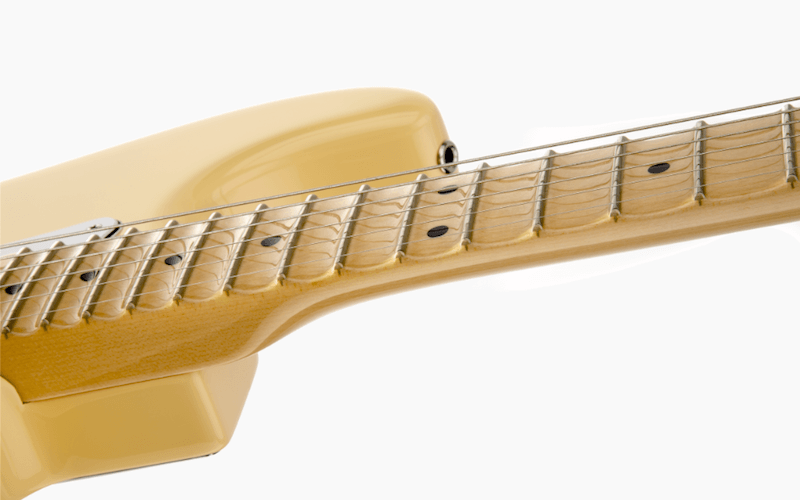
Posted on February 10, 2014 by Dave Eichenberger
Over the years there have been many modifications to the electric and acoustic guitar. One of the more radical ones is the use of a scalloped fingerboard. This is an irreversible modification that ‘scoops out’ the wood between the frets. This article will explain exactly why someone might do this, the benefits and drawbacks of scalloping and why this became popular in electric guitar playing.
SOME HISTORY…
The idea of having little or no wood between the frets of a fretted instrument isn’t new in music. The South Indian veena (or vina) has been built this way long before Yngwie travelled beyond the sun. The Indian sitar (which came many years after the veena) has raised, curved frets with strings running above and below these frets. In many traditional Asian and Indian music forms, notes are bent by pushing straight down into the neck, rather than bent side to side as on a traditional guitar. This facilitates very wild bending that you hear in this music. However, this music is based in single notes played over sustained drones, and traditional Western harmony (music based on diatonic chords) is not used.
In Europe, early lutes were built with scalloped fretboards, probably as influence from the Eastern instruments. Traditional lute music, however, rarely took influence from the East, as wild bending techniques were not used. This suggests that the scalloping was merely ornamental, rather than something used to achieve a certain sound.
OK, NOT THAT FAR BACK. WHAT ABOUT ELECTRIC GUITAR?
The first electric guitarist to use a scalloped fretboard on a popular recording is someone Jeff Beck called ‘the best guitarist alive’: John Mclaughlin. John used a scalloped fretboard on his groundbreaking albums with the fusion band Mahavishnu Orchestra (a Gibson ES-345) as well as his Indian-influenced band Shakti (an Abe Wechter-built 13 string built from a Gibson J-200). Mclaughlin used the scalloped fretboard for those unique Eastern bends straight down towards the fingerboard wood.
The next big player who used one was the great Ritchie Blackmore, from Deep Purple and later, Rainbow. Ritchie, who knew Mclaughlin, was influenced by the lute music of the British Isles. His exciting style used mostly single notes played very fast, mixed in with wild bluesy bends. His scallops were a little different as they were deeper towards the next higher fret and virtually nonexistent under the larger strings. These asymmetrical scallops helped Ritchie achieve his big bends and wild cello-like vibrato.
Yngwie Malmsteen is the one many guitarists today associate with a scalloped fretboard. His playing was influenced by Baroque violin and cello playing, and helps him obtain a similar vibrato. Being a big fan of Ritchie Blackmore helped too.
WHY WOULD ANYONE CHOOSE TO PLAY SUCH A THING?
On a traditional guitar, you press the string down right behind the fret, and you feel the wood underneath your finger. The sounding length of the string is between the top of the fret and the bridge. On a scalloped fingerboard, you do press until the string contacts the top of the fret and no more. You don’t feel wood under your finger, and if you pressed any more, the note would go sharp. As a result, it requires a light touch. With less effort on the fretting hand, your arm can be more relaxed, and it causes less pain. Traditional bends are especially easy, as the strings glide along the tops of the frets easier, and your fingers don’t drag along the fingerboard. You can position your finger so you can get a little under the string as well. Vibrato is enhanced the same way- the string glides along the tops of the frets and your finger doesn’t drag along the wood. Bends can happen straight down too, although that is a little more difficult as the tension of the strings causes them to dig into the fingers. It is easy to add vibrato to entire chords this way, which is a neat effect.
Some guitars are offered with just the last few frets scalloped, for ease of bending- especially if the guitar has 24 frets.
ALL THIS SOUNDS GREAT, BUT WHAT ARE THE DRAWBACKS?
The first drawback is that it is an irreversible modification. Modern luthiers scallop a fingerboard by using round or conical files between the frets. Go too deep and you will see the side position markers. You might go through the fingerboard into the neck, or worse, hit the truss rod. People inexperienced with files can chip or gouge the frets too.
Maple fingerboards have to be refinished afterwards, and if the fingerboard is an exotic wood, realize that scalloping will eat most of that away.
ISN’T JUST HAVING TALL FRETS THE SAME THING?
In my opinion, it doesn’t feel the same at all. It feels like tall frets, not like a scalloped fingerboard. Tall frets also wear over time, so the differences become greater as time goes on. Personally, I find it much harder to adjust to tall frets than a scalloped board. You get the ease of bending of a scalloped board, but you can’t bend notes by pressing down very far, and bending individual notes in chords (a very cool effect) doesn’t work at all.
---------
So... there you have it! Scalloped fretboards are now available as a standard option on our Guitar Customization Tool! Big thanks to Dave Eichenberger for the great article he wrote over at the Seymour Duncan Blog!
Your email address cannot be published. Required fields are marked*

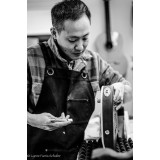
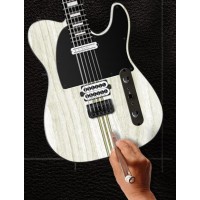
Very interested to know if this could be done on a multi scale.
Hi Allie - yes, we offer scalloped fretboards on our multiscale necks, no problem. Thank you! - Jeff Lee, Halo Custom Guitars